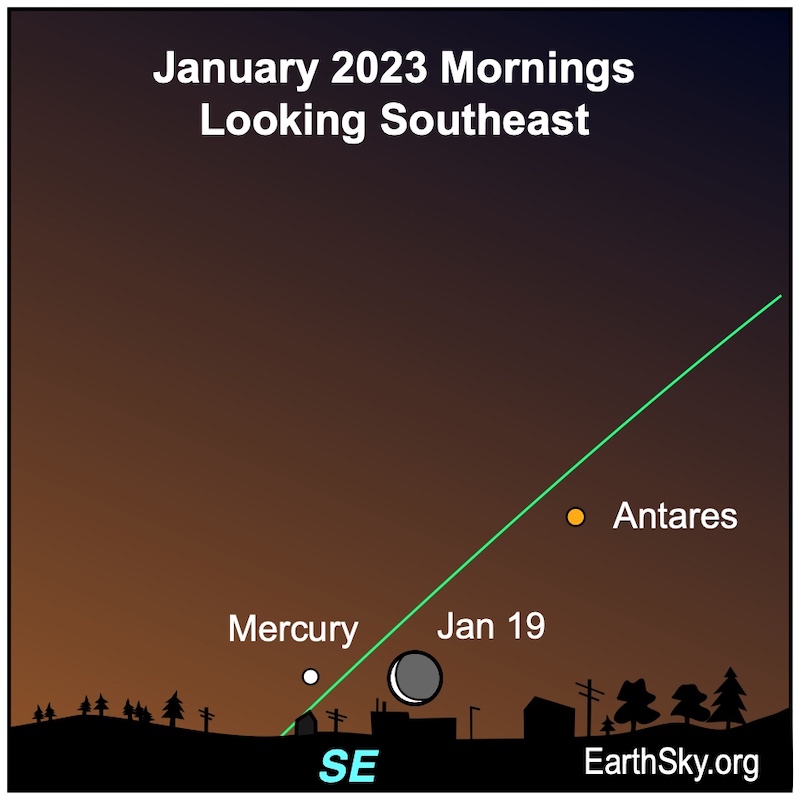
Our charts are mostly set for the northern half of Earth. To see a precise view from your location, try Stellarium Online.
See the moon near Mercury
On the morning of January 19, 2023, look for Mercury not far from a thin waning crescent moon in the dawn’s twilight. Mercury, the closest planet to the sun, is always near the sunrise or sunset, making it a challenge to view.
Not far from the moon and Mercury is the fiery red star Antares, which marks the heart of Scorpius the Scorpion.
By the way, Mercury will reach greatest elongation on January 30, 2023. Greatest elongation is when Mercury stretches as far from the sun as it can on the dome of our sky and it’s the best time to view Mercury. This apparition is better for observers in the Southern Hemisphere. At this time of year, the ecliptic, or path of the planets, moon and stars in our sky, is more perpendicular to the horizon for those south of the equator.
How to spot the moon and Mercury
Given clear skies and an unobstructed horizon, chances are that you’ll see both the moon and Mercury with the eye alone. They are low on the horizon about 60 minutes before sunrise. Also remember, the slender crescent moon and Mercury will quickly fade away in the morning light.
Despite Mercury’s brilliance (+0.4 magnitude), Mercury still sits rather close to the horizon before sunrise and must contend with the glow of morning twilight. If you can’t see Mercury with the unaided eye, try your luck with binoculars.
The waning crescent moon – 8% illuminated – is about two days before new moon. Keep in mind that Mercury will be on the illuminated side of the crescent moon.
Also, look for a beautiful glow on the unlit portion of the crescent moon. It is light reflected from Earth and called earthshine.
Bottom line: No matter where you live worldwide, let the thin crescent moon be your guide to Mercury on the morning of January 19, 2023.
For more great observing events in the coming weeks, visit EarthSky’s night sky guide











